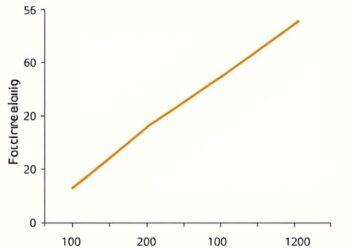In a groundbreaking continuation of earlier research, a new study from the Massachusetts Institute of Technology (MIT) has brought fresh hope to the battle against Alzheimer’s disease, focusing on the potential of gamma frequency sensory stimulation as a non-invasive therapeutic approach. Over a period extending nearly two years, five volunteers subjected to daily 40Hz light and sound stimulation demonstrated promising cognitive outcomes, particularly among those with late-onset Alzheimer’s disease, marking a compelling advance in the quest for effective treatment modalities.
This research builds on an initial clinical trial interrupted by the COVID-19 pandemic, where 15 mild Alzheimer’s patients engaged in a protocol receiving one hour daily of 40Hz audiovisual stimulation through LED panels and speakers. Previous animal studies had shown that this gamma entrainment—referred to as GENUS, or gamma entrainment using sensory stimuli—could enhance neural synchrony at the critical 40Hz frequency, preserve synaptic networks, and reduce pathological proteins such as amyloid-beta and tau, which are implicated in Alzheimer’s pathology. Encouragingly, these findings echo across multiple independent laboratories, reinforcing the biological plausibility behind sensory gamma stimulation.
The new study examined longitudinal outcomes in a smaller subset of these original participants who opted to continue using the stimulation devices beyond the formal trial, under an open-label extension. These five volunteers returned to MIT for comprehensive assessments 30 months post-enrollment, including electroencephalogram (EEG) measurements to evaluate brain wave entrainment, magnetic resonance imaging (MRI) to assess brain volume changes, cognitive batteries, sleep quality monitoring, and plasma analyses of Alzheimer’s biomarkers. Notably, four of these individuals were control subjects during the original trial, transitioning into active treatment during the extension, reflecting a slightly shorter exposure period.
Strikingly, the three female volunteers with late-onset Alzheimer’s exhibited either cognitive improvement or a marked attenuation of decline over the extended stimulation period when compared with large cohorts of matched patients from national databases. This improvement was most evident across standardized neuropsychological tests, where significant differences emerged favoring the stimulated group. Enhanced synchronization of brain activity at the 40Hz gamma frequency was also documented at the 30-month mark, suggesting sustained neurophysiological responsiveness to the intervention.
Complementing these functional outcomes, two late-onset participants who provided plasma samples showed lasting reductions in phosphorylated tau (pTau217), a biomarker increasingly recognized as a sensitive surrogate for Alzheimer’s neurodegeneration. These decreases, 47% in one patient and nearly 20% in another, were measured with a novel FDA-approved assay, marking the first evidence of direct biological modulation by gamma sensory stimulation in humans. Such results hint at an underlying alteration of disease processes rather than merely symptomatic relief.
Conversely, the two male subjects with early-onset Alzheimer’s did not demonstrate comparable cognitive gains or biomarker improvements. Their brain wave entrainment to 40Hz stimulation was notably diminished relative to late-onset counterparts, potentially reflecting fundamental pathological or genetic differences between early- and late-onset forms. This divergence underscores the heterogeneous and multifaceted nature of Alzheimer’s disease and suggests that personalized therapeutic strategies may be imperative.
While the study did not find statistically significant preservation of brain volume after 30 months of stimulation—a contrast to earlier findings at three months—this may reflect the complex dynamics of neurodegeneration over longer timescales or sample size limitations. The persistence of brain-wave entrainment and slowed biomarker progression during chronic treatment nonetheless supports the notion that sensory gamma stimulation holds promise as a modulator of disease trajectory.
The authors highlight that despite the small cohort and absence of a blinded control group for the extension phase, these findings warrant further exploration through larger, randomized controlled trials currently underway with involvement from MIT-affiliated startup Cognito Therapeutics. These studies aim to more definitively clarify efficacy, elucidate mechanisms, and identify predictors of positive response, including genetic and pathological markers that may differentiate early- and late-onset patients.
Beyond therapeutic applications, the team is embarking on investigations into the prophylactic potential of GENUS, enrolling cognitively normal older adults with familial Alzheimer’s risk factors to determine if preemptive gamma entrainment could delay or prevent clinical onset. This paradigm shift toward early intervention could radically transform management frameworks for Alzheimer’s disease.
Principal investigators Diane Chan and Li-Huei Tsai underscore the safety and feasibility of this sensory stimulation approach, which leverages a simple, at-home modality with a strong mechanistic rationale rooted in neurophysiology. The non-invasive nature, absence of pharmacological side effects, and promising biomarker changes position GENUS as a uniquely attractive candidate amid a landscape of complex and often toxic treatment attempts.
This research carries profound implications for neuroscience and clinical neurology, as it elucidates the role of rhythmic neural activity modulation as a therapeutic strategy and expands the frontier of brain stimulation beyond more invasive or device-intensive methods. The interplay of oscillatory dynamics with proteinopathy and neural network integrity presents a fertile ground for continued multidisciplinary inquiry.
Cumulatively, these results illuminate a hopeful path forward in the fight against Alzheimer’s dementia, emphasizing the power of harnessing endogenous neural rhythms through targeted sensory inputs to alter disease course. The convergence of neuroengineering, clinical trials, and biomarker science showcased here exemplifies the innovation required to meet one of the most pressing medical challenges of our time.
Subject of Research: People
Article Title: Gamma sensory stimulation in mild Alzheimer’s dementia: an open-label extension study
News Publication Date: 25-Oct-2025
Web References: http://dx.doi.org/10.1002/alz.70792
Image Credits: The Picower Institute for Learning and Memory
Keywords: Alzheimer disease, Neurodegenerative diseases, Dementia, Neuroscience, Clinical neuroscience, Neurology, Medical treatments, Brain stimulation




